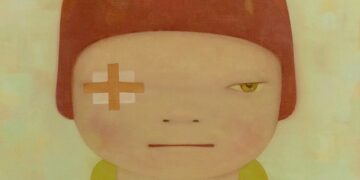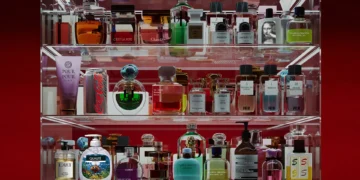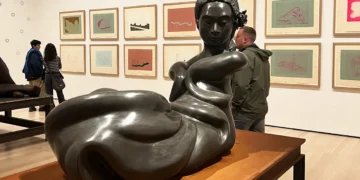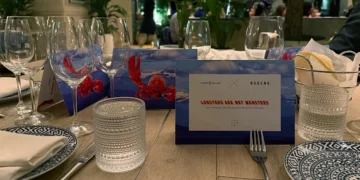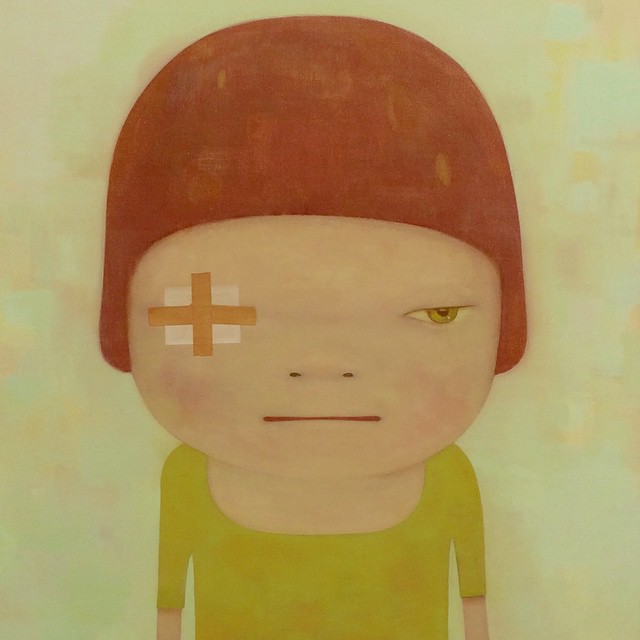
Nara Yoshitomo’s 2014 painting Wounded is currently available for fractional investing via the Masterworks app and platform, providing a rare opportunity to own a piece of this work – without having to shell out millions of dollars.
Whether you call Wounded a cute masterpiece or a creepy look into the heart of melancholy, you have to admit that it demands attention. The simple half-length portrait of a bandage-eyed child shows a neutral expression that almost defies definition.
Some viewers might look at it and envision hope while others could see pain and suffering. Chances are that the artist wanted to evoke both of these emotions along with many other powerful ones.
No matter what critics may see in the painting, a number of art investors feel that they’re looking at a strong physical asset. Back in 2019, a large-scale painting by Nara sold at the Contemporary Art Evening Sale in Hong Kong for over HK$195 million, a record-creaking sale price for a Japanese artist, and another installation of his sold for around HK$40 million.
With Wounded having shown up on the fractional art investment platform Masterworks, chances are good that many in the art world are going to start turning their heads.
How Art Shareholders Are Changing the Market
Even if there wasn’t any financial interest in Nara’s work, he could easily survive on reputation alone. While he might reject the claim that he’s ever been influenced by the manga artists who were popular during his youth, the Gothic imagery of 1960s and 1970s-era Japanese comic books shine through the sparse visage of the child depicted in Wounded.
The combination of pastel colors and a nondescript background help to further reinforce the connection between his work and what you might find in a well-worn tankoubon book. The fact that investors can buy a small piece of the painting is helping to draw the attention of those far outside of the art market.
Wounded is available on Masterworks, which gives users the freedom to purchase shares of paintings in much the same way that they could buy stock in a company. Then, once the painting is resold, all of the individuals who purchased a fractionalized ownership stake in it enjoy the profits, proportionally to how much money they put into it.
Experts from the organization use historical appreciation rates and annualized return figures to calculate the potential return on investment that one might see from a given piece of art. Financial industry insiders have long warned that past performance is not necessarily a strong indicator of future performance. However, the art market involves physical assets as opposed to securities, which is why so much attention is paid to the overall interest in a particular work.
Press coverage is a major factor as well, which is something that Nara Yoshitomo seems to enjoy plenty of. Fashion house Stella McCartney presented some styles inspired by his work as part of their 2023 Womenswear Collection, and it’s likely that others are going to follow suit. That’s helping to increase the chances of this painting receiving even more attention.
Using Data to Extrapolate Trends
All of this information isn’t worth much if you aren’t able to put it to use. That’s why the team from Masterworks has put together a sophisticated method of collecting and analyzing data to determine which pieces of art are likely to be the best investment opportunities for the platform and its community of users.
Most of the analysis is based on repeat sales of individual works by the same artist, which allows the team to create an appreciation model.
These experts also pay attention to everything that comes down the media pipeline. When Nara Yoshitomo sought to raise awareness for refugee populations, it helped to illustrate just how dialed into world events he really was and therefore generated a great deal of publicity among those who wanted to support the cause. Each time an in-demand artist grants an interview, it tends to generate some additional attention.
Once a painting is offered on Masterworks, the platform’s data analysis reports give potential investors the ability to judge whether or not they’d want to actually purchase shares in a particular painting. Those who do are buying part of a real asset, which means they’re actually gaining something that’s tangible to a greater degree than if they had purchased something like a non-fungible token.
Pieces like those produced by Nara Yoshitomo have a ready market for them, which includes many admirers from far outside of the world of stocks and bonds.
Art as an Investment Vehicle
There’s no such thing as an investment without risk, but blue-chip art like Wounded might have a lower risk than many newer alternative asset classes.
Since artwork is made up of genuine physical assets, it’s far more tangible than most other types of alternative investment vehicles. Paintings, sculptures and even pieces of fine jewelry can serve as a smart financial move, because they’re likely to always maintain at least some portion of its intrinsic value.
